Engagement, Valentines Day
Tips And Tricks To Buying Jewelry
It can be a daunting task to pick out just the right earrings, necklace, or ring for you or for that special someone. So, here are some tips and tricks to buying the perfect piece of jewelry.
Silver or Gold?
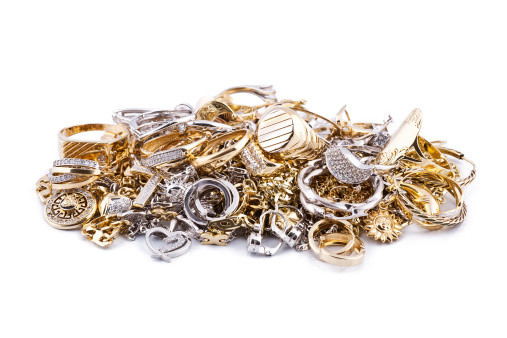
One of the first questions people have when buying jewelry is whether they should go for silver or gold metal. According to the style experts, gold pieces tend to look better with warm toned skin, whereas skin with cooler undertones often fares better with silver jewelry. Try to avoid rose gold if the person has more of a pink tint to their skin. That being said, it really comes down to the person’s individual style. When buying for someone else, it might be helpful to ask their friends or to get a look at what they already own to get a sense of what they might like!
As for cost, both silver and gold are precious metals made to last a long time. However, gold is slightly more durable than silver, as it is more scratch resistant and does not tarnish. This oftentimes makes gold pieces more expensive than silver ones.
Diamonds
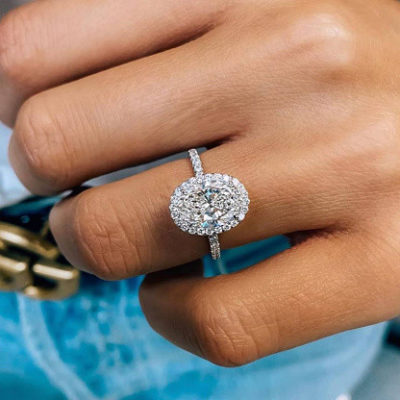
You know what they say: diamonds are a girl’s best friend. They can be the perfect statement piece or even signify one’s union in holy matrimony. Because they can be a lifelong investment, you want to make sure you are buying just the right one.
There are four “C’s” when it comes to buying diamonds: cut, color, clarity, and carat.
1. Cut
Cut is the way in which the diamond is shaped, and has the greatest influence on the diamond’s beauty and sparkle. Therefore, your first priority should be to go with the most ideal cut grade that you can afford. The best thing to do is ask your jeweler for their opinion for your given price range.
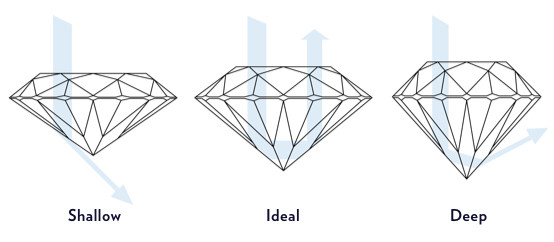
2. Color
Color is the second most important factor when purchasing diamonds. Contrary to common belief, it is very rare to find a diamond that is colorless, as diamonds can be found in nearly any naturally occurring color. Diamonds are categorized alphabetically, with prices declining as you go further down the alphabet. Starting with D Color diamonds, or ones that are absolutely colorless, they are the highest color grade that money can buy. Going further down the scale, diamonds between the G-J range are near colorless diamonds, giving great value for their quality. Lastly, diamonds categorized as K Color have a faint tint, making them more budget friendly.
3. Clarity
Clarity is the overall assessment of the imperfections on and within the diamond itself. A diamond’s clarity also corresponds with its price, with higher clarity grades having higher price points. With this in mind, it is important to know that many internal imperfections are too small to see with the human eye, and you don’t necessarily have to worry about buying the most expensive diamond for it to look perfect.
4. Carat
The last “c” is for carat, which refers to the diamond’s weight, not its size. While many believe that a higher carat corresponds with a better diamond, this is not always the case. In other words, a high carat diamond with a poor cut may have poor sparkle and actually appear smaller. So, a good rule of thumb is to spend your money primarily on the cut, and pick a carat weight that is slightly below either the full or half mark. (i.e. Opt for a .9 over a 1 to save considerable money and lose no visual appeal.)
Shape is another important component for choosing a diamond. Below are some examples of common shapes that diamonds appear as. The shape you choose for a diamond can depend on a number of things, from the compatibility with its color to the desired look of its wearer. Because shape closely corresponds to clarity as well as color, it is best to ask your jeweler what their recommendations are for particular combinations.
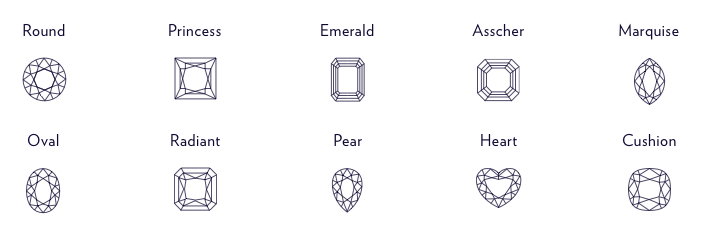
For an even more extensive list of guidelines for buying diamonds, visit https://www.bluenile.com/education/diamonds?gclid=CjwKCAiA55mPBhBOEiwANmzoQr-VbPvOIa0IWyDHy2jl3HmWik1Tu04-O3Pkrk7GuVbTUOSqjtqJOxoCICcQAvD_BwE&click_id=269810240&utm_source=google&utm_medium=text&utm_term=4+cs+of+diamonds
How About Stones Other Than Diamonds?
Not popping the big question or just want to go with something other than a flashy diamond? There are many other stones out there that are just as beautiful and can be even more meaningful to yourself or the person you are giving it to.
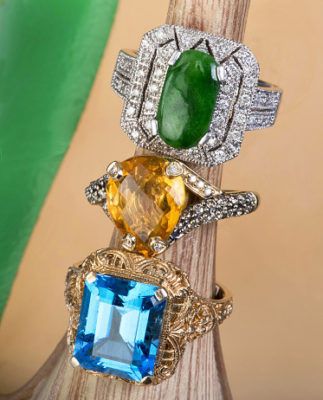
When looking at other gemstones, the three main things that a jeweler looks for are hue, tone, and saturation. Hue determines how much the stone strays from its “true” color; therefore, gemstones that show pure color with few hues of other colors are the most valuable. Tone is the depth of the color of the stone. Depending on the stone, varying degrees of tone may be of greater value than others. Saturation determines how much the stone is tainted with brown or gray hues, with a higher saturation corresponding to a more desirable stone. Here’s a good rule of thumb: for a more saturated stone, it might be best to get a more shallow cut to let more light pass through, while a less saturated gem may shine more with a deeper cut.
For a list of which birthstone correlates with which month, visit https://www.jewelers.org/education/gemstone-guide/22-consumer/gifts-trends/50-guide-to-birthstone-jewelry
Because jewelry can last a long time, it is a good idea to do your research before making an investment in a beautiful piece, regardless of what it is. Sometimes the most expensive jewelry doesn’t necessarily mean that it’s the best for your occasion! Stay within your budget, and always get a second opinion from a jeweler. Most importantly, have the other person in mind if you are giving it to someone other than yourself.

